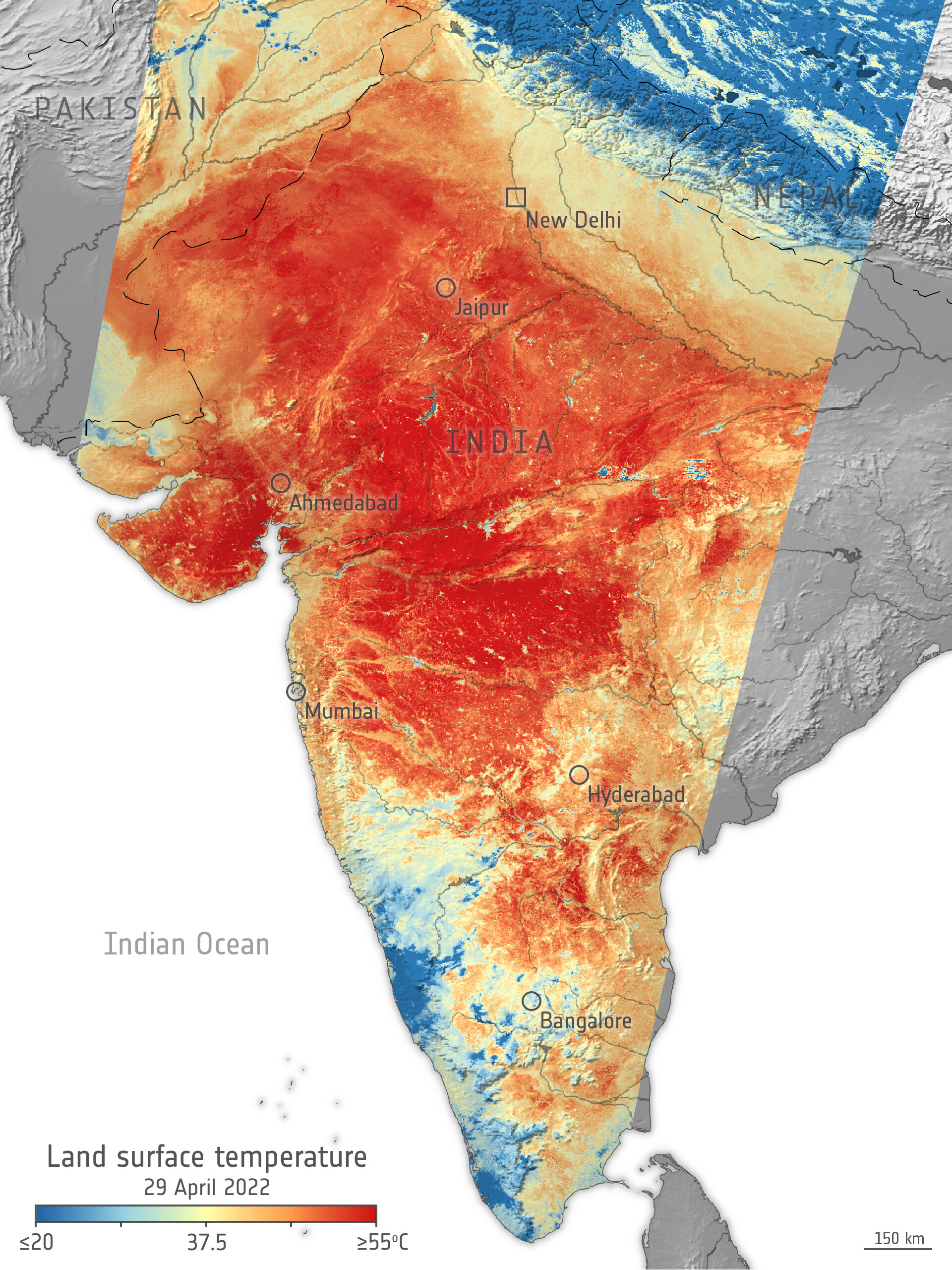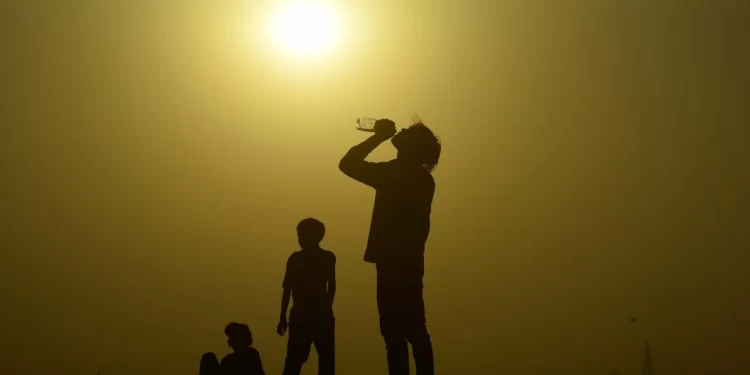An unprecedented heatwave in South Asia is bringing dangerously high temperatures. Both India and Pakistan are being hit the hardest with widespread record-breaking temperatures above 105 degrees F (40 degrees C). Last weekend in India, Bikaner was the hottest place in the country at 47.1C, according to the India Meteorological Department. However, in some parts of northwest India, images captured by satellites showed that surface land temperatures had exceeded 60C – unprecedented for this time of year when usual surface temperatures are between 45 and 55C.
“The data shows that surface temperature in Jaipur and Ahmedabad reached 47°C, while the hottest temperatures recorded are southeast and southwest of Ahmedabad (visible in deep red) with maximum land surface temperatures of around 65°C,” the European Space Agency said on its website.

Power outages, water shortage and restricting wheat exports
The high temperatures have put massive pressure on power demand in both India and Pakistan, where people have had to endure hours of power cuts amid the crippling heat. India is facing its worst electricity shortage in six decades. Power cuts lasting upwards of eight hours have been imposed in states including Jharkhand, Haryana, Bihar, Punjab and Maharashtra as domestic coal supplies, the fossil fuel that accounts for more than 70% of India’s electricity generation, have fallen to critical levels and the price of imported coal has soared.
In a bid to speed up the transport of coal across the country, Indian Railways cancelled more than 600 passenger and postal train journeys to make way for the transportation of coal to power plants.
“It’s becoming a difficult situation,” Sumant Sinha, chairman of ReNew Energy Global Plc, a supplier of wind and solar power in India, said in an interview. “The whole summer will be a test.”
At least 16 of India’s 28 states have been grappling with power outages of between two and 10 hours a day, Ashok Gehlot, chief minister of Rajasthan, said Monday in a Twitter message, before conditions eased in some areas.
Few short-term measures to deal with the heatwave are available and the sustainability measures that are needed take time and will require a deep transformation of the economy.
India is currently considering restricting wheat exports as the severe temperatures have damaged crops. Top officials are discussing the move and will recommend it to Prime Minister Narendra Modi, who will then make the decision. There’s no need to curb exports for now, as the country has enough supply to meet domestic demand, Food Secretary Sudhanshu Pandey said at a briefing on Wednesday (May 4).
Many regions reported falling water supplies that will only worsen until the annual monsoon rains in June and July. The water shortages hit farmers hardest, including those growing wheat as India aims to boost exports to help ease a global shortage due to the war in Ukraine.
Clearly, India is left with few options to deal with the heatwave in the short-term; over the long-term, there will be a need to move the whole economy on a more sustainable basis so that the country is better able to adapt to rising global temperatures and even thrive, as a large segment of the population is still in poverty and the middle classes are struggling.
There is a light at the end of the tunnel, for example, the latest bilateral agreements between India and Germany that are focused on sustainable development. It will see India receive €10 billion in aid by 2030 to boost clean energy. Considering that India is currently facing a major coal shortage, and more than 70% of India’s electricity generation still relies on coal, the country requires a deep transformation of its economy.
The boost of clean energy will benefit India’s economy in the long term: it forms a solution for coping with future heatwaves and power outages. As a matter of fact, the United Nations Intergovernmental Panel on Climate Change (IPCC) has found India will be one of the most vulnerable countries to weather events caused by warming temperatures, including more intense and frequent heatwaves across South Asia.
Editor’s Note: The opinions expressed here by Impakter.com columnists are their own, not those of Impakter.com — In the Featured Photo: A man drinks water on a hot summer day near Yamuna River Bank, on April 10, 2022 in New Delhi, India. Featured Photo Credit: Raj K Raj / Hindustan Times via Getty Images.










